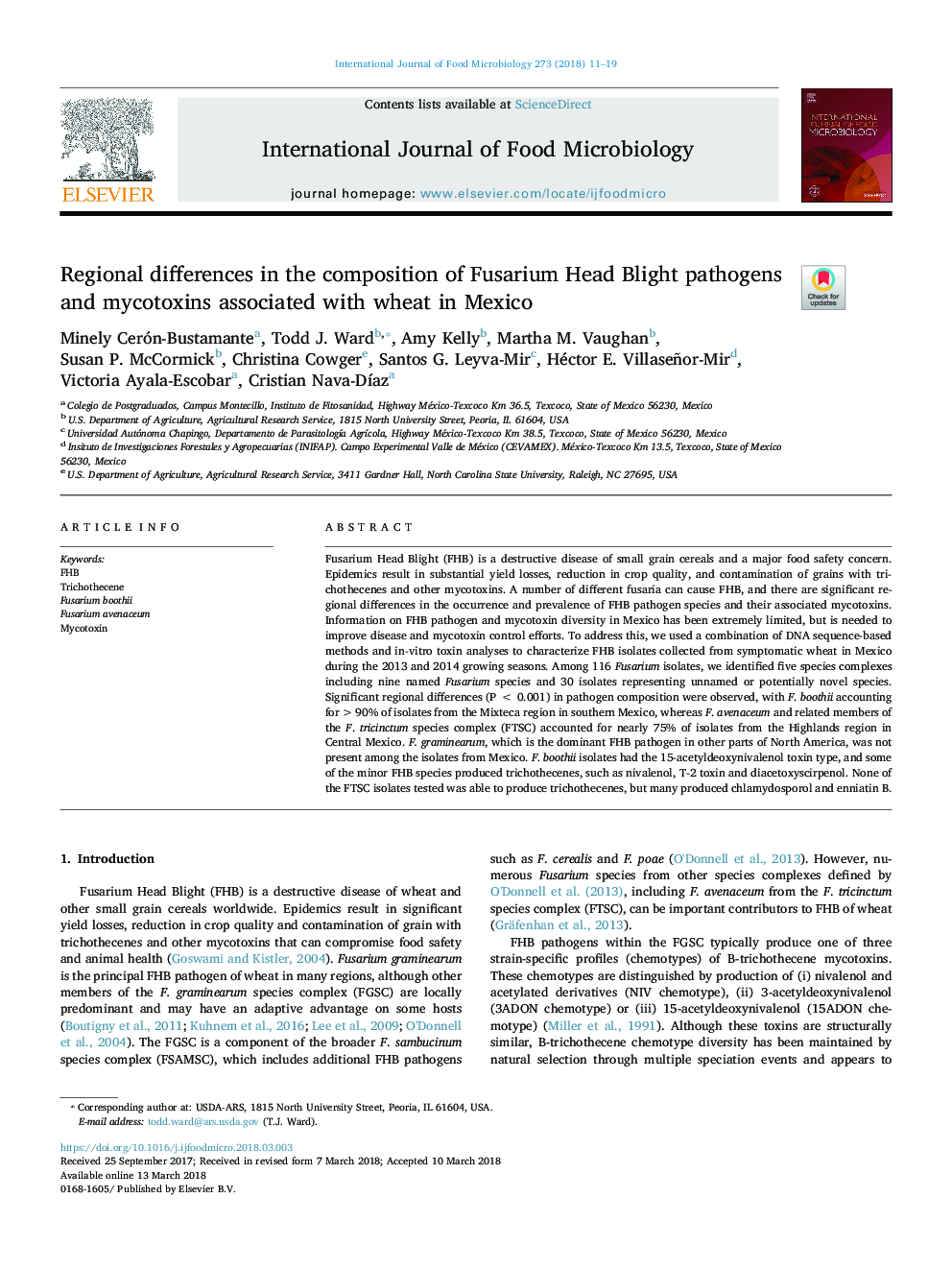| Article ID | Journal | Published Year | Pages | File Type |
|---|---|---|---|---|
| 8844219 | International Journal of Food Microbiology | 2018 | 9 Pages |
Abstract
Fusarium Head Blight (FHB) is a destructive disease of small grain cereals and a major food safety concern. Epidemics result in substantial yield losses, reduction in crop quality, and contamination of grains with trichothecenes and other mycotoxins. A number of different fusaria can cause FHB, and there are significant regional differences in the occurrence and prevalence of FHB pathogen species and their associated mycotoxins. Information on FHB pathogen and mycotoxin diversity in Mexico has been extremely limited, but is needed to improve disease and mycotoxin control efforts. To address this, we used a combination of DNA sequence-based methods and in-vitro toxin analyses to characterize FHB isolates collected from symptomatic wheat in Mexico during the 2013 and 2014 growing seasons. Among 116 Fusarium isolates, we identified five species complexes including nine named Fusarium species and 30 isolates representing unnamed or potentially novel species. Significant regional differences (Pâ¯<â¯0.001) in pathogen composition were observed, with F. boothii accounting for >90% of isolates from the Mixteca region in southern Mexico, whereas F. avenaceum and related members of the F. tricinctum species complex (FTSC) accounted for nearly 75% of isolates from the Highlands region in Central Mexico. F. graminearum, which is the dominant FHB pathogen in other parts of North America, was not present among the isolates from Mexico. F. boothii isolates had the 15-acetyldeoxynivalenol toxin type, and some of the minor FHB species produced trichothecenes, such as nivalenol, T-2 toxin and diacetoxyscirpenol. None of the FTSC isolates tested was able to produce trichothecenes, but many produced chlamydosporol and enniatin B.
Related Topics
Life Sciences
Agricultural and Biological Sciences
Food Science
Authors
Minely Cerón-Bustamante, Todd J. Ward, Amy Kelly, Martha M. Vaughan, Susan P. McCormick, Christina Cowger, Santos G. Leyva-Mir, Héctor E. Villaseñor-Mir, Victoria Ayala-Escobar, Cristian Nava-DÃaz,
